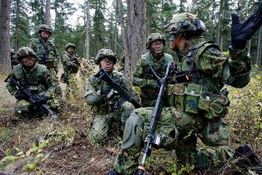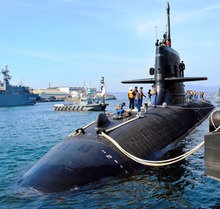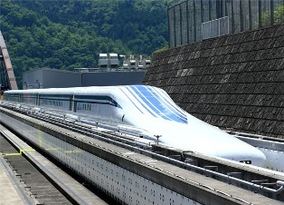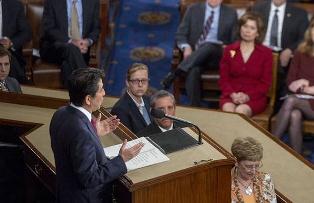 US Department of Defense
US Department of Defense Exercise Talisman Sabre is the main joint exercise conducted between the ADF and elements of the US armed forces. It is held once every two years, and takes place in and around Townsville and Rockhampton in Queensland. This year marks the first time that the SDF has participated in the exercise, although the numbers involved (40) are not exactly overwhelming. Nevertheless, the fact that the SDF have been assigned to operate with the US Marines during the exercise suggests that they will focus on amphibious landings, which is a reflection of both Japan’s increasing concern in maintaining its territorial integrity and the fact that the Marines are the principal US military force residing in Japan.
Expectations are that the SDF’s involvement in this year’s exercise will be the start of a much broader plan for bilateral and trilateral training between Japan, the US and Australia. Last weekend Australian Foreign Minister Julie Bishop was in Iwaki, Fukushima Prefecture, to attend the PALM7 dialogue on Pacific Island issues. While there Bishop met with PM Shinzo Abe, where they discussed an upgrade in the arrangements concerning bilateral training so that the SDF and ADF can more easily transit through one another’s countries to participate in exercises.
The fact that this conversation has come a week before the Shangri-La Dialogue in Singapore, where expectations are that the US, under Defence Secretary Ashton Carter, will deliver a fairly stern rebuke of China’s island building in the South China Sea and unilateral imposition of restricted air and sea zones, adds to the rumour mill on just where Australia-Japan security relations are headed.
Australia has made no secret of the fact that it regards Japan as a crucial regional partner and a force for stability in an unstable world. The current deliberations in the Japanese Diet on Japan’s right to exercise collective self-defence (and the manner in which it will be exercised) have been closely followed by Australia’s political and policy class, and commentary on Japan’s intentions have generally found favour with a more ‘pro-active’ stance by Japan in ensuring that the region operates according to established laws and regulations.
Legislative activity by the Abe government has also brought about the possible involvement of Japan in Australia’s Future Submarine Project, and if this goes ahead, then clearly it will be in the interests of both countries to have a far larger defence relationship with one another.
The involvement of 40 SDF troops in Talisman Sabre is merely the beginning of regular military exercises between the forces of the US, Japan and Australia (not forgetting to mention New Zealand). At a time when China’s activities are raising serious questions about their intentions, it stands to reason that countries be prepared for whatever scenario may arise in the near distant future.



 RSS Feed
RSS Feed